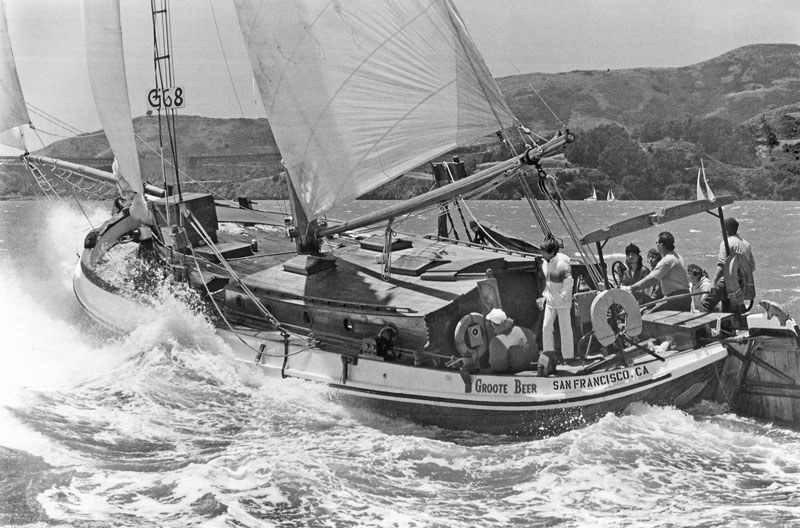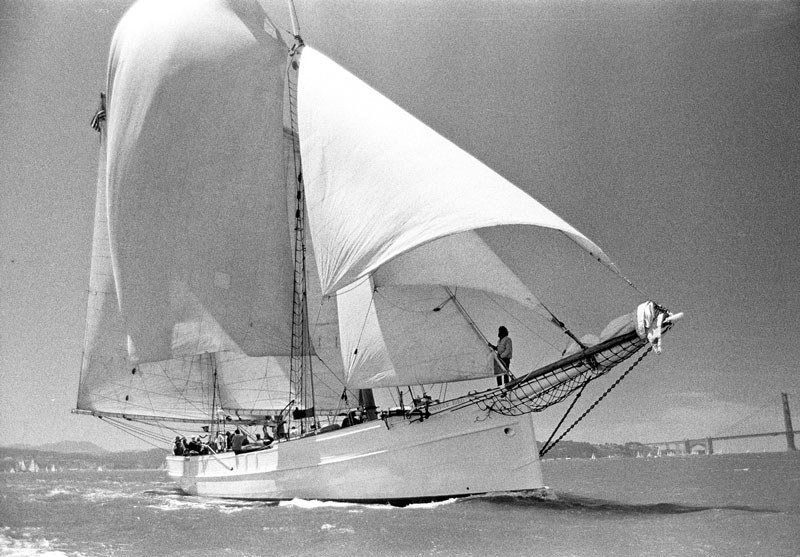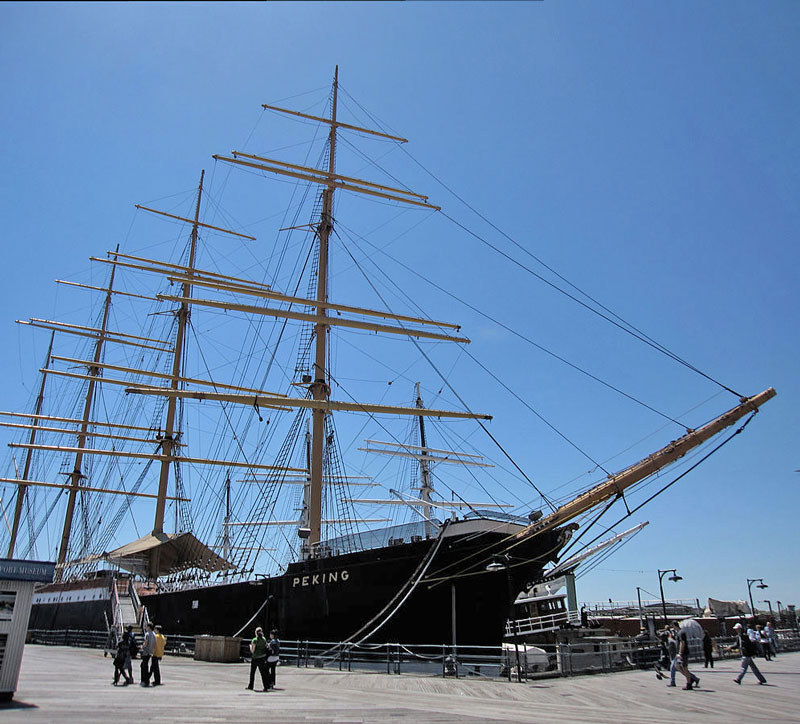
Homeward Bound
We hesitate to call it a trend — that poor word has been beaten to death by social media — but it is interesting to see how many sailing vessels have made their way back to where they started from in the last few decades.
If you’re a regular reader, you’ll know that the 44-ft cutter Java Head — which had been berthed in the Bay since the mid-40s — was recently trucked cross-country to Boothbay, Maine, where she was built in 1933. And of course what Northern California sailor doesn’t know that Bill Lee’s iconic 68-ft sailing missile Merlin is finally back under his Santa Cruz ownership after many miles and homeports?
Over the past few decades, other significant Bay-based homeward bounders included the 52-ft ‘botteryacht’ Groote Beer (Great Bear), the splendid Dutch sailing barge that was ordered by a Nazi during the war — but continuously delayed by her Dutch builder and never delivered. Incredibly, what is essentially a large, flat-bottomed Dutch canal boat with twin leeboards sailed across several oceans in her career (including the ’57 Transpac) before ending up on the Bay. Under the ownership of Cliff and Ruth Ann Fremstad, she often competed in the Master Mariners Regattas in the 1980s. In 2001, she returned to Holland where she was restored and is on display.

©Latitude 38 Media, LLC
Likewise, the 105-ft (LOA) schooner Wander Bird spent six decades in the Bay. Built in Germany in 1883, she worked as a pilot schooner at the mouth of the Elbe River for 40 years. After that, her two most famous owners were Warwick Tompkins Sr. (Commodore’s father), who sailed her all over the place and eventually homeported her in Sausalito; and Harold Sommer, who restored her during the ’70s and ’80s with the help of just about everybody on the Sausalito waterfront. In 2002 she sailed home to Germany, where she underwent another extensive overhaul and presently is used as a charter vessel under her original designation, Elbe 5.

©Latitude 38 Media, LLC
The latest — and largest — vessel to head for the waters where her career began is the four-masted, 377-ft (sparred length) steel barque Peking. One of two square-riggers on display at the South Street Seaport Museum in New York, the huge ship (picture the Balclutha 70 feet longer and with an additional mast) will be towed home to Hamburg, where she was built in 1911, sometime this spring. One of Germany’s famed ‘Flying P’ line — all ships’ names began with ‘P’ — the Peking and her sisters represented the last gasp of commercial sail, as hauling huge bulk cargos over long distances was no longer economically viable for coal-fired ships. The Panama Canal was the final nail in that coffin. Although she sailed the roughest seas around the roughest capes many times, Peking’s most famous voyage might have been the one around the Horn in 1929 when a young Irving Johnson filmed the ship laboring under 100-knot winds in his documentary Around Cape Horn.

Peking is slated to be restored and become the centerpiece of a multimillion-euro port museum in Hamburg.
The South Street Seaport Museum, whose financial troubles in the last few years preclude having two tallships, will now be able to focus on its other square rigger, the 1885 Liverpool-built Wavertree, which is currently undergoing an extensive refit.
You can view Irving Johnson’s Around Cape Horn, as well as footage from Warwick Tompkins’ trip around Cape Horn on Wander Bird, on YouTube.
